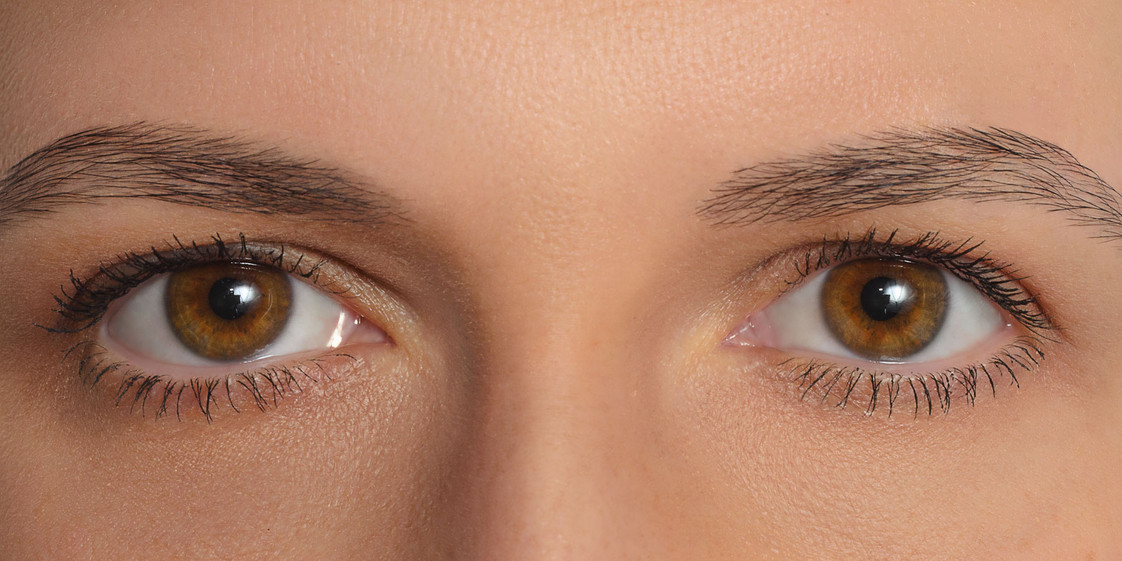
OD vs OS: Understanding the Differences in Ocular Prescription Terms
Posted by Team Debby on 16th Jan 2024
OD vs OS: Understanding the Differences in Ocular Prescription Terms
When we examine an eye prescription, we often encounter a series of abbreviations and terms that may initially seem cryptic. Among the most common are "OD" and "OS," which are abbreviations stemming from classical Latin.
OD stands for "oculus dexter," referring to the right eye, while OS signifies "oculus sinister," representing the left eye. Eye care professionals use these terms to designate prescriptions for each eye, ensuring that any vision impairments are accurately addressed.

Determining the correct lens power and type is essential for correcting vision impairments, which can range from myopia and hyperopia to astigmatism.
The precise values prescribed for OD and OS help optometrists and ophthalmologists provide patients with the appropriate corrective lenses. Whether for glasses or contact lenses, understanding these notations is crucial for patients to make informed decisions about their eye care.
Understanding eye prescriptions allows individuals to actively participate in the discussions and decisions regarding their visual health.
Key Takeaways
- OD and OS are terms from Latin that refer to the right eye and left eye, respectively.
- These abbreviations help eye care professionals specify prescriptions for each eye.
- Comprehending prescription notations is vital for choosing suitable corrective lenses.
Understanding Eye Prescriptions

When we look at an eye prescription, we're seeing a set of parameters that correct our vision based on individual eye needs. It's crucial to understand each component to ensure proper eyewear selection.
Reading Glasses Prescription
The glasses prescription provides a blueprint for creating lenses that compensate for refractive errors in our eyes, such as nearsightedness, farsightedness, or astigmatism.
To read a glasses prescription, it's important to recognize the common terms and numbers that indicate lens power in diopters, which denote the level of correction needed.
Interpreting OD, OS, and OU
The abbreviations OD, OS, and OU are Latin terms used to denote eyes:
- OD (Oculus Dexter): Right Eye
- OS (Oculus Sinister): Left Eye
- OU (Oculus Uterque): Both Eyes
When comparing OD vs OS in eye prescriptions, we're often looking at differences in vision needs between both eyes. Each eye may have distinct prescriptions due to varying degrees of refractive error.
Sphere (SPH) and Cylinder (CYL) Explained
In an eye prescription, the SPH and CYL values serve different functions:
- Sphere (SPH): This indicates the lens power, measured in diopters, needed to correct nearsightedness or farsightedness. A positive number signifies farsighted correction, while a negative number is for nearsighted correction.
- Cylinder (CYL): This number measures the degree of astigmatism in the eye, which is an irregular curvature of the cornea causing blurred vision. Like SPH, it's measured in diopters and can also be positive or negative.
In essence, understanding these parameters helps us interpret how to correct our individual visual impairments with the correct eyewear.
OD and OS: Right Eye vs Left Eye
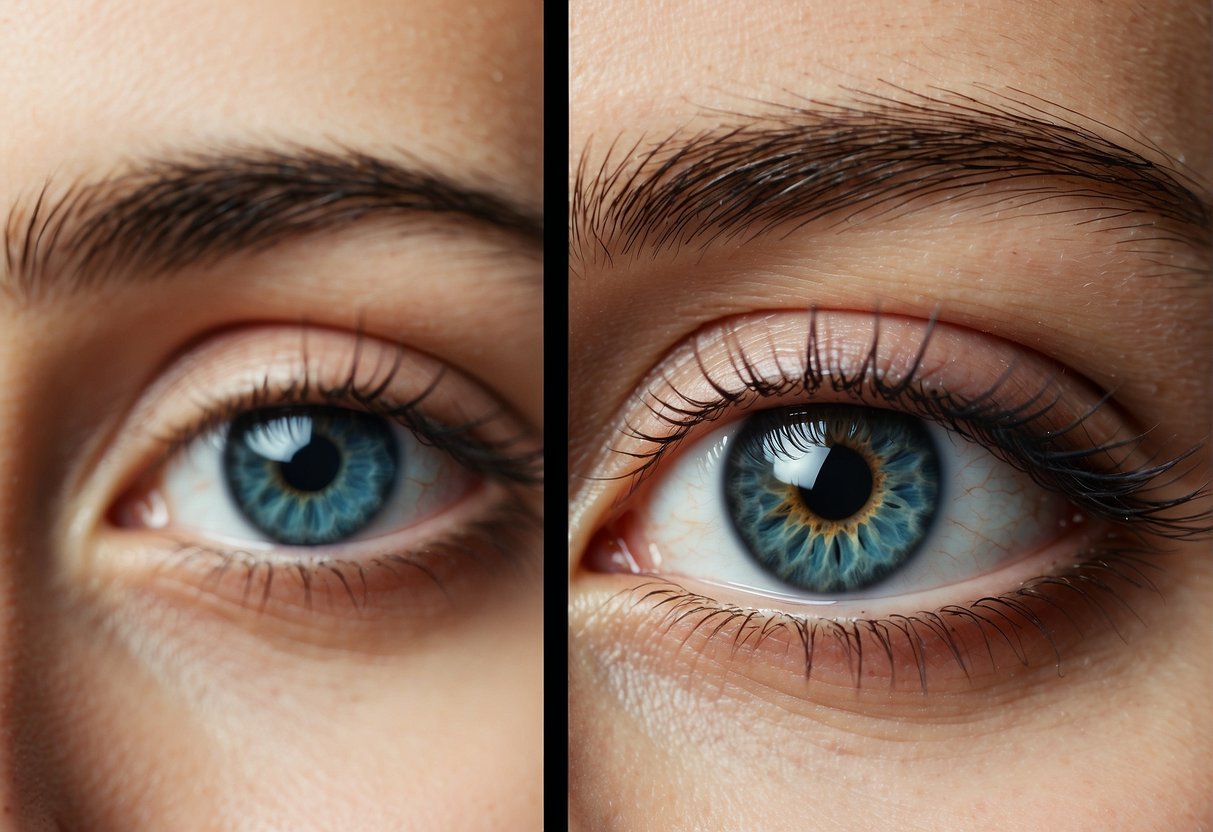
In the context of eye prescriptions, it's crucial to understand the meaning of OD and OS as they refer to the right and left eyes respectively.
Is OD Right Eye?
OD stands for "oculus dexter," the Latin term for the right eye. When you see OD on a prescription, you can be certain it indicates the parameters related to the correct vision correction for your right eye.
Is OS Left Eye?
OS translates to "oculus sinister" and is used to denote the left eye. Prescriptions will use OS to specify the unique corrective requirements for your left eye.
How Prescriptions Vary Between Eyes
Our right and left eyes can have different visual acuity and may require lenses with varying prescription strengths. This is often reflected clearly in a prescription:
| Eye (Latin Abbreviation) | Abbreviation Meaning | Prescription Example |
|---|---|---|
| OD (oculus dexter) | Right eye | -2.00 SPH |
| OS (oculus sinister) | Left eye | -2.50 SPH +1.25 CYL |
The numbers vary, showing different eye prescriptions for each eye, with OD for the right eye and OS for the left eye. It's not uncommon to encounter an additional term, OU, which means "oculus uterque" referring to both eyes together when the prescription is the same for both.
Determining Lens Power and Type

In eyeglass prescriptions, the key components such as sphere (SPH), cylinder (CYL), and prism are fundamental to tailoring lenses that correct vision precisely. It's essential to understand these terms to ensure optimal vision correction.
Understanding Sphere in Prescriptions
Sphere (SPH) in a prescription indicates the lens power, measured in diopters, needed to correct nearsightedness or farsightedness. A "plus" sign means a patient is farsighted, while a "minus" sign denotes nearsightedness. The higher the number, the stronger the prescription lens required.
For example, an SPH of +2.00 means a farsighted correction of 2 diopters, while -2.00 indicates the opposite.
Astigmatism and Cylinder Values
Cylinder (CYL) values correct astigmatism, which occurs due to an irregularly shaped cornea. These values represent the amount of lens power required for astigmatism correction. A prescription might list a CYL as -1.50, indicating that 1.5 diopters are necessary to correct the distortion caused by astigmatism.
| CYL Power | Astigmatism Correction |
|---|---|
| -0.25 | Minimal |
| -1.00 | Moderate |
| -2.00 | Significant |
Prism and Base in Eyeglasses
Prism correction is used to fix alignment issues in the eyes, aiding in the treatment of conditions like double vision. The prism value is denoted in prism diopters, and the base is the direction the thickest edge of the prism faces in the glasses. Base directions can be up, down, in (towards the nose), or out (towards the ear).
- Prism value: 1.5pd Base up - indicating a prism of 1.5 prism diopters with base facing upwards.
Lens power and type are integral in ensuring that eyeglasses provide precise vision correction. A detailed understanding of sphere, cylinder, and prism values is essential for interpreting prescriptions and fabricating the right lenses.
Vision Impairments and Legal Blindness
In this section, we focus on the specifics of legal blindness, including the definitions and criteria used to classify individuals as legally blind, and how it relates to the scale of common vision impairments such as myopia and hyperopia.
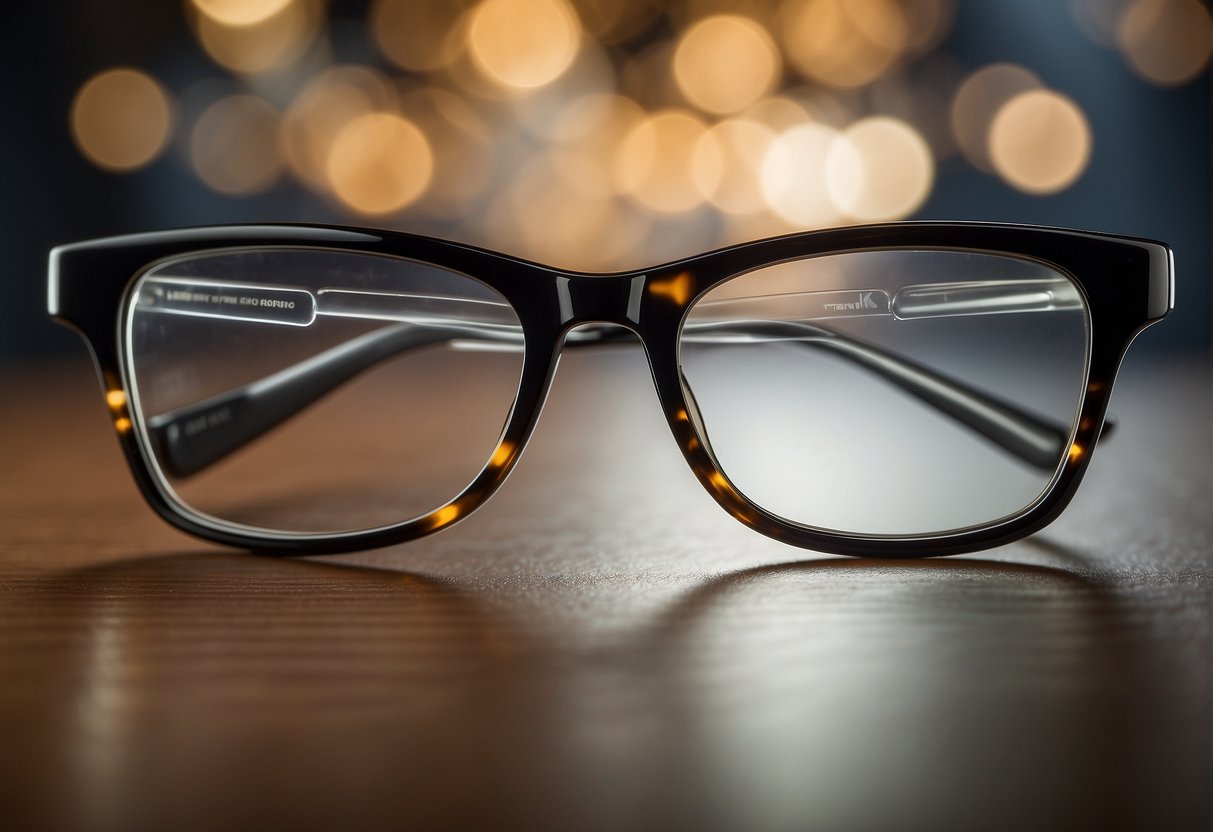
Legally Blind: Definitions and Prescriptions
According to the law, we consider a person to be legally blind when their best-corrected visual acuity is 20/200 or worse in their better eye. This means even with corrective lenses, their vision measures at a level where they can see at 20 feet what a person with typical vision can see at 200 feet.
A prescription that indicates legal blindness may include a diopter measurement of -2.50 or higher in myopia, or +2.50 or higher in hyperopia; however, these numbers can vary. Legally blind prescription often involves high diopter lenses to correct vision as much as possible.
Myopia and Hyperopia Scale
The scale of myopia and hyperopia can be explained as follows:
- Myopia (nearsightedness): A condition where objects up close appear clearly, while objects far away are blurred. Here are common prescriptions and their corresponding visual acuity:
| Prescription (- Diopters) | Visual Acuity |
|---|---|
| -0.50 to -3.00 | Mild Myopia |
| -3.00 to -6.00 | Moderate Myopia |
| -6.00 and higher | Severe Myopia |
- Hyperopia (farsightedness): A condition where distant objects may be seen more clearly than objects that are near. Here are common prescriptions and their levels of hyperopia:
| Prescription (+ Diopters) | Visual Acuity |
|---|---|
| +0.50 to +3.00 | Mild Hyperopia |
| +3.00 to +6.00 | Moderate Hyperopia |
| +6.00 and higher | Severe Hyperopia |
It is important to note that the diopter scale is not a direct indicator of legal blindness. The distinction of legal blindness is typically centered around the 20/200 visual acuity marker rather than the diopter prescription alone.
Prescription Measures for Specific Conditions

When addressing vision issues through corrective lenses, we tailor prescriptions to the individual's specific ocular needs. These measures ensure optimal vision correction and comfort.
Astigmatism Prescriptions
Astigmatism is a condition where the cornea has an irregular shape, leading to blurred vision. Our prescriptions for astigmatism include a specific measure called cylinder (CYL), denoted in diopters (D), which compensates for the corneal irregularity.
The axis, measured in degrees, indicates the orientation of the astigmatism. In the table below, you can see how astigmatism glasses are prescribed:
| CYL (Diopters) | Axis (Degrees) | Prescription Type |
|---|---|---|
| -1.00 to -3.00 | 0 to 180 | For moderate astigmatism |
| -0.25 to -0.75 | 0 to 180 | For mild astigmatism |
Astigmatism prescriptions differ from normal prescriptions, which often do not include a CYL measurement.
Presbyopia and NV-ADD
Presbyopia is an age-related condition characterized by difficulty focusing on close objects. To correct this, we include an "Add" value in the prescription, referred to as NV-ADD, which stands for near vision addition. This is the additional power needed to aid in close-up tasks such as reading. Below is an example of how NV-ADD is typically denoted in a prescription:
- OD (Right Eye): +2.50 sph +1.00 add
- OS (Left Eye): +2.00 sph +1.00 add
The "add" part of the prescription is universally applied to both eyes and indicates the extra focusing power needed for near vision. The sph (sphere) denotes the primary correction for distance vision while the add represents the increased magnification necessary for close work.
Glasses and Contact Lenses
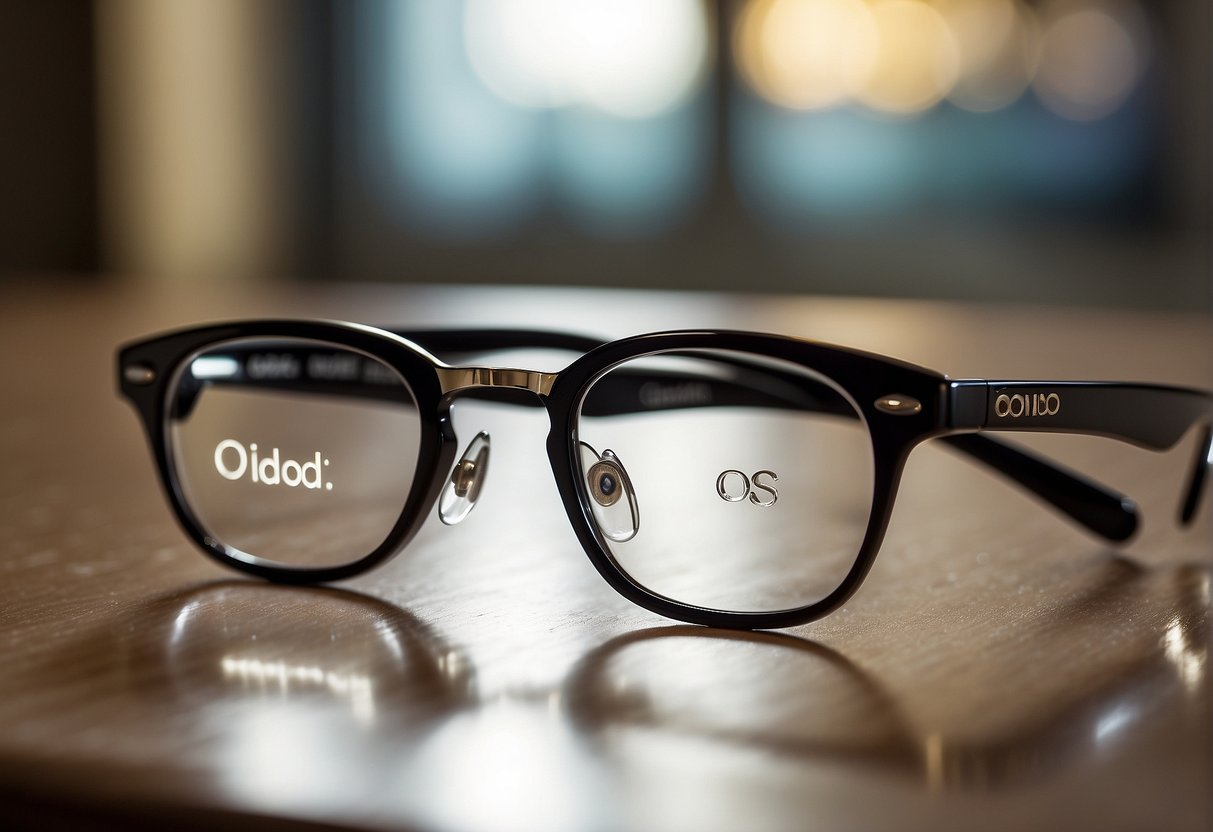
When discussing corrective eyewear, we consider both the visual requirements of individuals and the precision needed in optical prescriptions. Our focus here is on how these prescriptions differ between glasses and contact lenses, as well as understanding the strength required for reading glasses using eye charts.
Prescription Differences for Contacts
Prescriptions for glasses and contact lenses are not interchangeable. For contacts, the prescription accounts for the lens being placed directly on the eye, thus requiring different parameters.
OD refers to 'oculus dextrus,' the right eye, while OS denotes 'oculus sinister,' the left eye. These terms specify the corrections needed for each eye.
Contact lens prescriptions additionally include measurements for base curve (BC) and diameter (DIA), which determine how the lens fits. Here's an example of how the prescription differences might look:
| Prescription Type | OD (Right Eye) | OS (Left Eye) |
|---|---|---|
| Glasses | -2.00 Sph | -2.50 Sph |
| Contacts | -2.25 Sph, 8.4 BC, 14.0 DIA | -2.75 Sph, 8.6 BC, 14.0 DIA |
Reading Glasses Strength and Eye Charts
Reading glasses are often required when we face challenges with near vision, a condition called presbyopia. The right strength of readers is crucial for clear vision.
To determine "what strength readers do I need," one must utilize a reading glasses test, often involving an eye chart. A reading glasses eye chart displays progressively smaller text, indicating which strength is suitable. For example:
- +1.00 to +1.25 - suitable for ages 40-45
- +1.50 to +1.75 - suitable for ages 45-50
- +2.00 to +2.25 - suitable for ages 50-55
It is important to match the correct strength, as choosing a strength too low may lead to inadequate correction, while too high can cause eye strain.
Explaining Vision Acuity
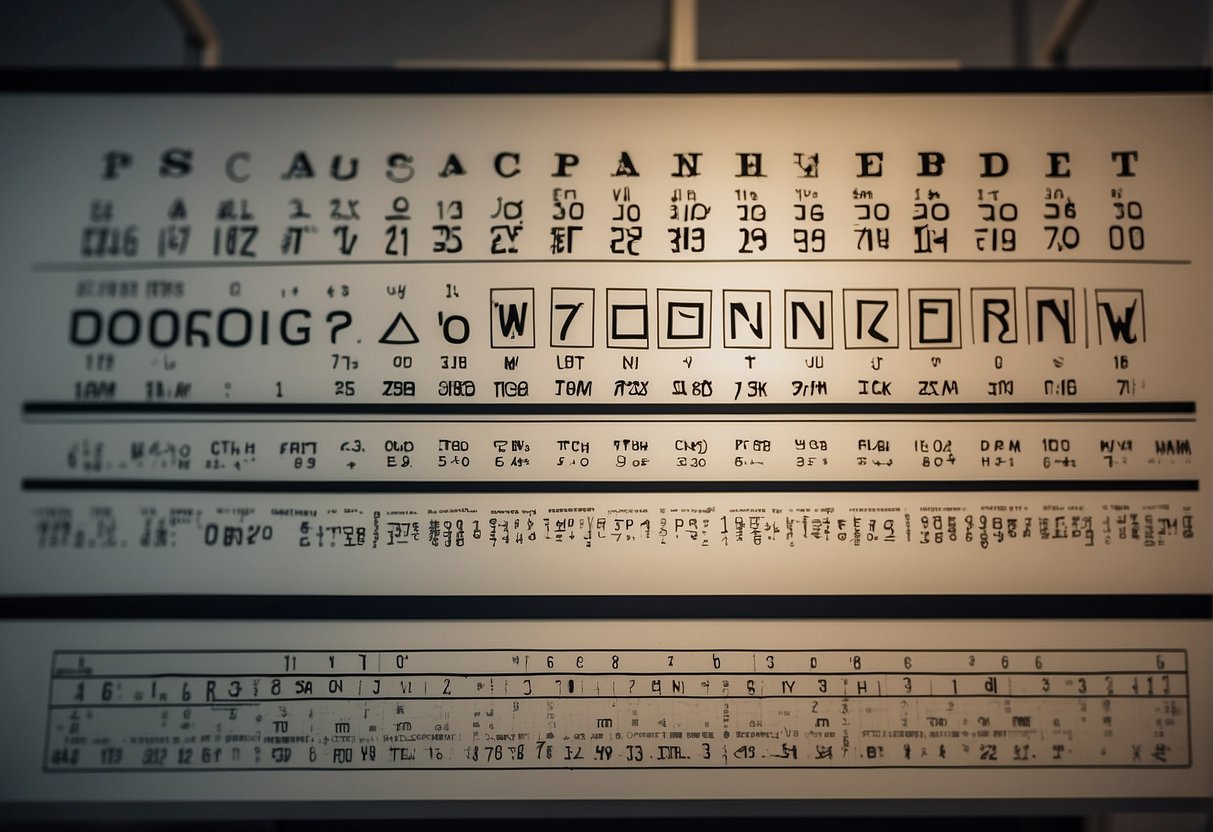
Vision acuity refers to the clarity or sharpness of vision, which is quantified through specific measurements. By understanding these, we can gauge the overall health of our eyesight.
Understanding 20/20 Vision
"20/20 vision" is the term used to express normal visual acuity, measured at a distance of 20 feet. If we have 20/20 vision, it means that we can clearly see at 20 feet what should normally be seen at that distance. It is a baseline measurement synonymous with sharp or optimal vision.
- 20/40 vision: This indicates that we must be as close as 20 feet to see what a person with normal vision can see at 40 feet.
- 20/30 vision: Slightly better than 20/40, we see at 20 feet what a person with normal vision sees at 30 feet.
Interpreting Vision Acuity Measurements
When we interpret vision acuity measurements, we're essentially deducing how our vision compares to the standard norm. Here's a brief interpretation:
- 20/40 vision: Not necessarily bad, but below the standard 20/20. This level could be a sign that corrective lenses are needed. It's half as sharp as 20/20 vision.
- 20/30 vision: While it's not as crisp as 20/20 vision, having 20/30 vision isn't considered bad. It's just a slight deviation from the norm.
- 20/400 vision: This is classified as severe visual impairment, or legal blindness. With this acuity, what a person with normal vision can see at 400 feet, we can only see clearly at 20 feet.
Optical Abbreviations and Terms
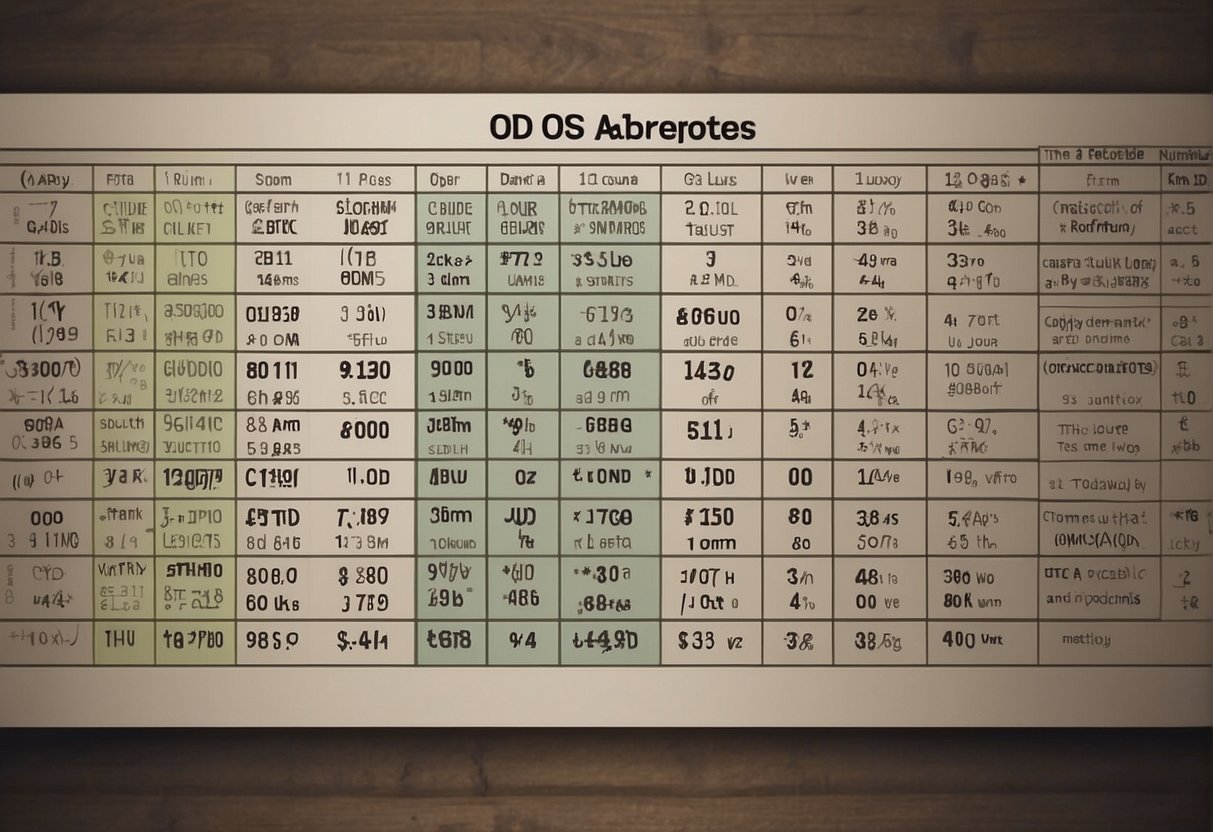
In the realm of optometry, we encounter specific terms and abbreviations that are crucial for correctly interpreting eyeglass prescriptions. Understanding these will empower you to better comprehend your own vision needs or those of others.
Sphere (SPH) and Cylinder (CYL) Terms
Sphere (SPH): This term indicates the power of the lens required to correct our vision. It is measured in diopters and denotes the degree of nearsightedness or farsightedness. A positive number suggests hyperopia (farsightedness), while a negative number indicates myopia (nearsightedness).
Cylinder (CYL): CYL represents the amount of astigmatism, a condition where the eye has an irregular curvature and requires additional correction. The measure in diopters could be positive or negative, and it complements the spherical measurement to refine our visual acuity.
Axis and Add in Eyeglass Prescriptions
Axis: This term in an eye prescription defines the orientation of astigmatism correction. It is denoted in degrees ranging from 0 to 180. The axis is pertinent only if there is a CYL value, as it specifies the direction of the corrective curvature needed for astigmatic lenses.
Add: Typically associated with multifocal lenses, "Add" stands for the additional correction power applied to the bottom part of the lens to facilitate reading or other close work. This value is also noted in diopters and is usually a positive number.
For patients with no refractive error requiring correction, we use the term plano, which represents a zero value in the SPH section of a prescription. By adhering to these standard abbreviations and terms, we ensure precision and consistency in vision correction across the optometric field.
Conducting a Reading Glasses Test

To determine the correct strength for reading glasses, we can perform simple tests at home or use a digital application on a phone.
Home Testing with a Reading Glasses Test
To conduct a home reading glasses test, first, we need to print out a reading chart similar to an eye exam chart. This chart typically includes various sizes of print, which we will use to assess our reading ability.
To perform the test, we should follow these steps:
- Sit comfortably in a well-lit room at a normal reading distance, which is about 14 to 16 inches from the face.
- Hold the reading chart at eye level and begin reading from the top line down.
- Start without reading glasses and note the smallest print size we can read without strain.
- Try on a pair of reading glasses with the lowest strength (+1.00 diopters).
- Read the chart again and continue to try increasing strengths until we find a pair that allows us to read the small print clearly and comfortably.
Use the following table as a guide for selecting the starting strength based on age:
| Age | Start Strength |
|---|---|
| 35-44 | +1.00 diopters |
| 45-49 | +1.50 diopters |
| 50-54 | +2.00 diopters |
| 55-59 | +2.50 diopters |
| 60-64 | +3.00 diopters |
This process is a quick check to estimate our required reading glasses power but does not replace a professional eye exam.
Reading Glasses Test on Phone
We can also perform a reading glasses test using a smartphone application. These apps are created to simulate a reading chart and can provide an easy and convenient way to measure the strength we may need for our reading glasses. Here’s how to do it:
- Download a reading test application from the app store, ensuring it's a reputable app with positive reviews.
- Open the application and set our phone to the display's maximum brightness.
- Hold the phone at a normal reading distance from our eyes, much like a book or other reading material.
- The app will display text in various sizes for us to read.
- We adjust the text size within the app smaller and smaller until we reach a point where comfort in reading is compromised.
- The application will recommend a diopter strength based on the smallest text size we can read comfortably.
Remember that different apps might have varied instructions, so it's important to follow the specific directions provided by the selected application. These tests are for convenience and can serve as a temporary solution or starting point for selecting reading glasses but are not a substitution for eye exams by an optometrist or ophthalmologist.
Deciphering Prescription Notations

When examining eye prescription notations, we must understand that they communicate specific values to opticians for creating lenses that correct vision.
Two critical aspects are the PLANO lens indication and spherical equivalent, as well as the implications of cylinder power and axis notations.
PLANO Lens and Spherical Equivalent
PLANO in an eye prescription signifies that the lens has no corrective power in the spherical part, effectively a zero strength. This term is often used when correcting vision problems unrelated to nearsightedness or farsightedness, such as astigmatism. The PLANO designation is specifically for the spherical correction.
For the spherical equivalent, it is a term we use to describe a single power that represents a combined correction for both spherical and cylindrical power in a lens prescription. It's calculated by adding half of the cylinder power to the sphere power:
| Sphere (SPH) | Cylinder (CYL) | Spherical Equivalent (SE) |
|---|
This value is crucial when we consider contact lenses, which typically only correct spherical errors.
Cylinder Power and Axis Notations
The cylinder (CYL) refers to the power correction for astigmatism and is represented by a number describing the degree of correction required; it could be negative (for nearsighted astigmatism) or positive (for farsighted astigmatism).
Alongside the CYL value, the axis represents the orientation of astigmatism, measured in degrees from 1 to 180. The axis number in glasses prescriptions determines the location of the cylinder power on the lens. This precise alignment is crucial for the corrective power to function correctly:
| Axis | Description |
|---|---|
| 90 | Cylinder power is vertical on the lens |
| 180 | Cylinder power is horizontal on the lens |
| 45 | Cylinder power is diagonal at a 45° angle |
In every prescription involving astigmatism correction, both CYL and axis measurements are indispensable as they work together to provide the needed visual correction.
Frequently Asked Questions

In this section, we aim to clarify common queries related to OD and OS abbreviations used in eye care, their implications for prescriptions, and the professional roles associated with these terms.
What do the abbreviations OD and OS represent in eye care?
OD stands for "oculus dexter," the Latin term for the right eye, while OS means "oculus sinister," referring to the left eye. These abbreviations are universally used by eye care professionals to denote measurements for each eye.
How do OD and OS differ when prescribing contact lenses?
When prescribing contact lenses, OD and OS indicate the measurements for the right and left eye, respectively. Each eye may require lenses with different corrective powers due to variations in vision acuity or astigmatism.
What are the implications of an OD or OS prescription for corrective lenses?
An OD or OS prescription specifies the lens power necessary for correcting vision in each eye. This prescription ensures that each eye receives the individually tailored correction required for optimal vision.
Can OD and OS values vary significantly, and what does that mean for vision?
Yes, OD and OS values can differ substantially. Varied values indicate a dissimilarity in vision between the two eyes, which may be due to conditions such as anisometropia, where each eye has a different refractive power.
In what ways are the roles of an ophthalmologist (OD) distinct from optometrists (OS)?
The roles of an ophthalmologist (MD, not OD) and an optometrist (OD) are significantly distinct. An ophthalmologist is a medical doctor who can perform eye surgery, manage diseases, and prescribe medication. Meanwhile, an optometrist examines eyes, prescribes corrective lenses, and may manage certain eye diseases.
How should one interpret a prescription with both OD and OS values?
A prescription with both OD and OS values indicates the power and type of corrective lens needed for each eye. It typically includes parameters like sphere, cylinder, and axis. These parameters relate directly to the specific vision correction for the right eye (OD) and the left eye (OS).

